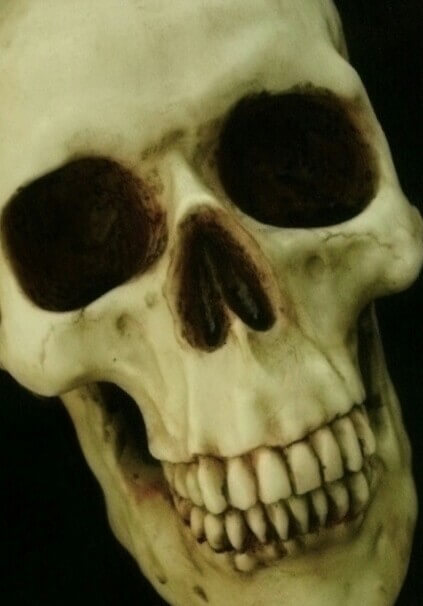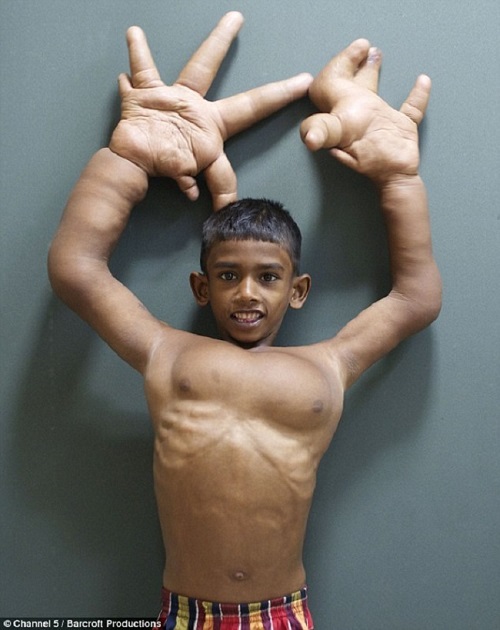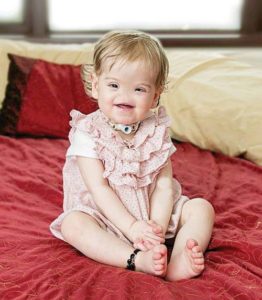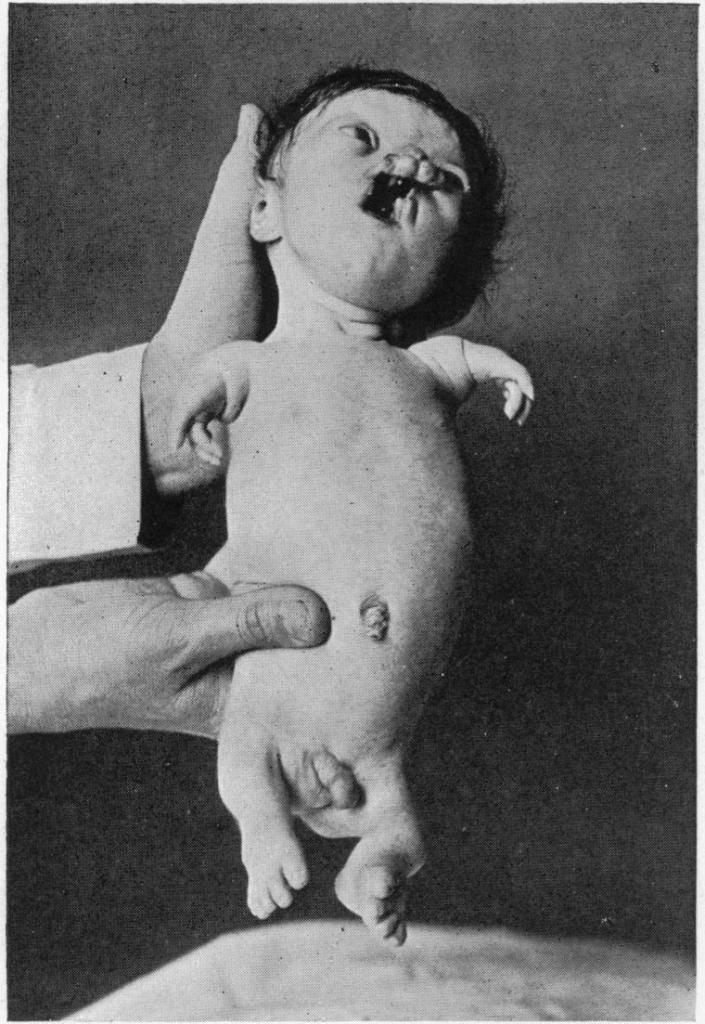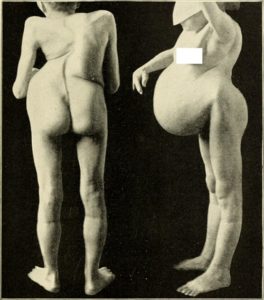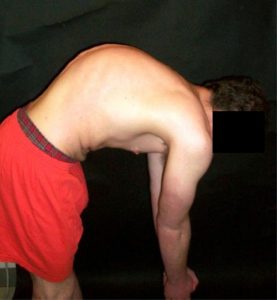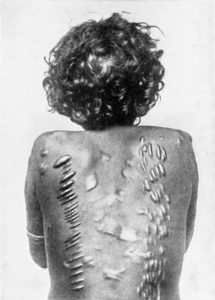In this post, we will provide fascinating information about 10 deformed people. Although some acquire human deformities at birth, trauma or disease, others will make it a fashion. We will talk about 6 people with no control over their abnormalities and 4 (including an added deformity of a little girl born without a nose) who have deliberately developed their own deformation process. In a previous post, we talked about how animals can have various malformations. Of course, all of the animals had acquired their unique differences involuntarily.
Although people will often get laughed at for their noticeable differences, fortunately, it doesn’t prevent all of them from giving up on their lives. Some will simply ignore the stares and laughs from other people. They may look different from others, but it doesn’t make them less human.
We are first going to cover human deformities present at birth, and acquired from disease or trauma.
Human Deformities: Birth, Trauma And Disease
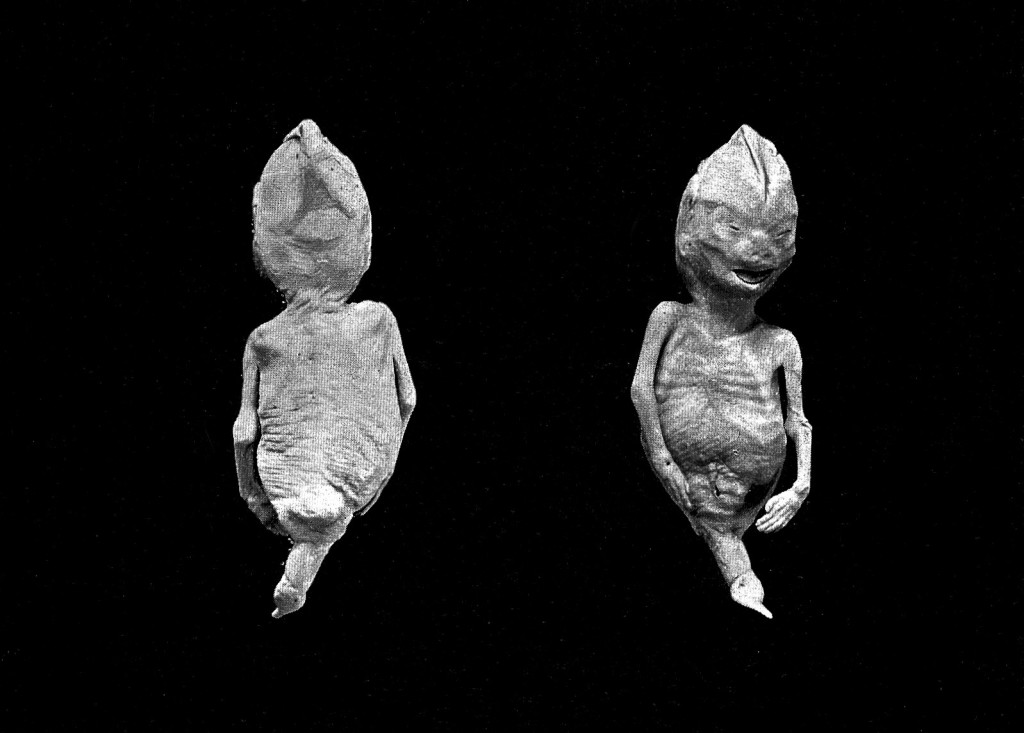
“B. C. Hirst & G. A. Piersol, Human monstrosities” by Wellcome Images is licensed under CC BY 4.0
Deformity Of The Face: Eye Proptosis
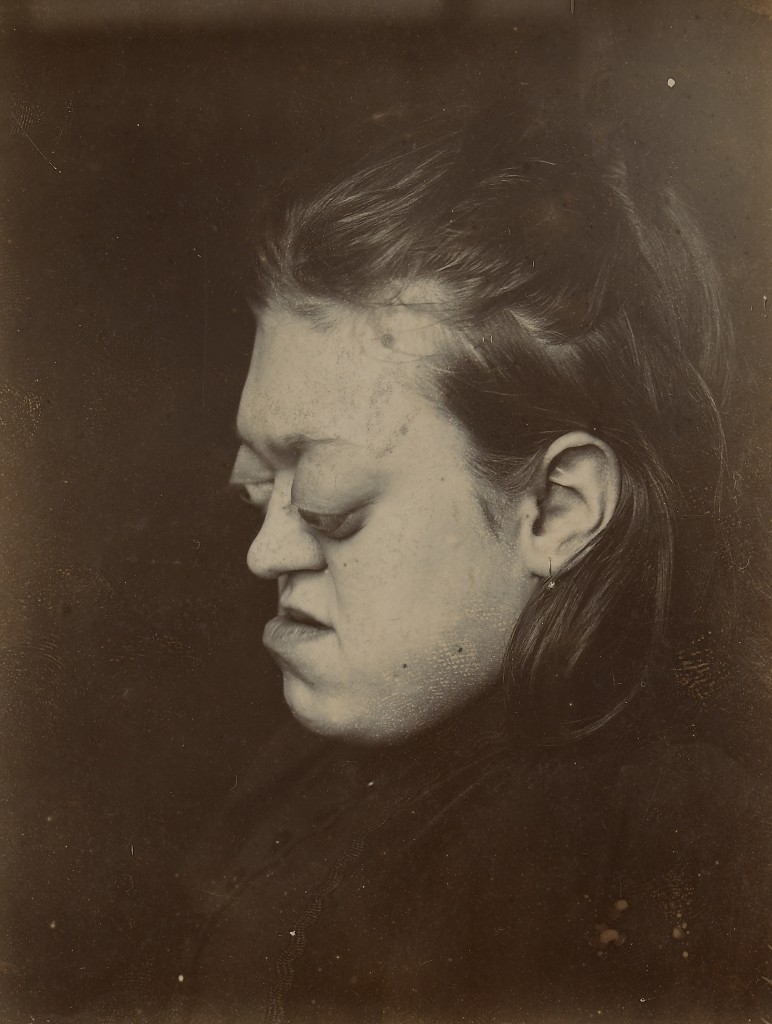
“Girl Aged 17 Years With Marked Proptosis” by Wellcome Images is licensed under CC BY 4.0
Eye proptosis is defined as a condition where the eye is in forward displacement and entrapment (caused by direct pressure on a single nerve) from behind the eyelids. It is common in dogs. A dog can acquire proptosis from head trauma and too much pressure applied to the front of the neck
Although proptosis is more common in dogs, occasionally humans can also acquire it. However, unlike dogs, humans can acquire the condition from natural causes at birth. It has also been seen in association with Graves’ disease. It can also be a sign of a disorder called Erdheim-Chester disease.
Of course, proptosis is a condition nobody would ever want to have. However, people have attempted to break a Guinness World Record for “eye-popping”. A woman by the name of Kim Goodman is the current world record holder. She extended her globes 12mm out of her sockets.
The seventeen-year-old woman in the black and white photograph above clearly has the condition of proptosis, along with other deformities of the face. Her rare condition is of congenital origin.
Congenital Deformity Of The Nose
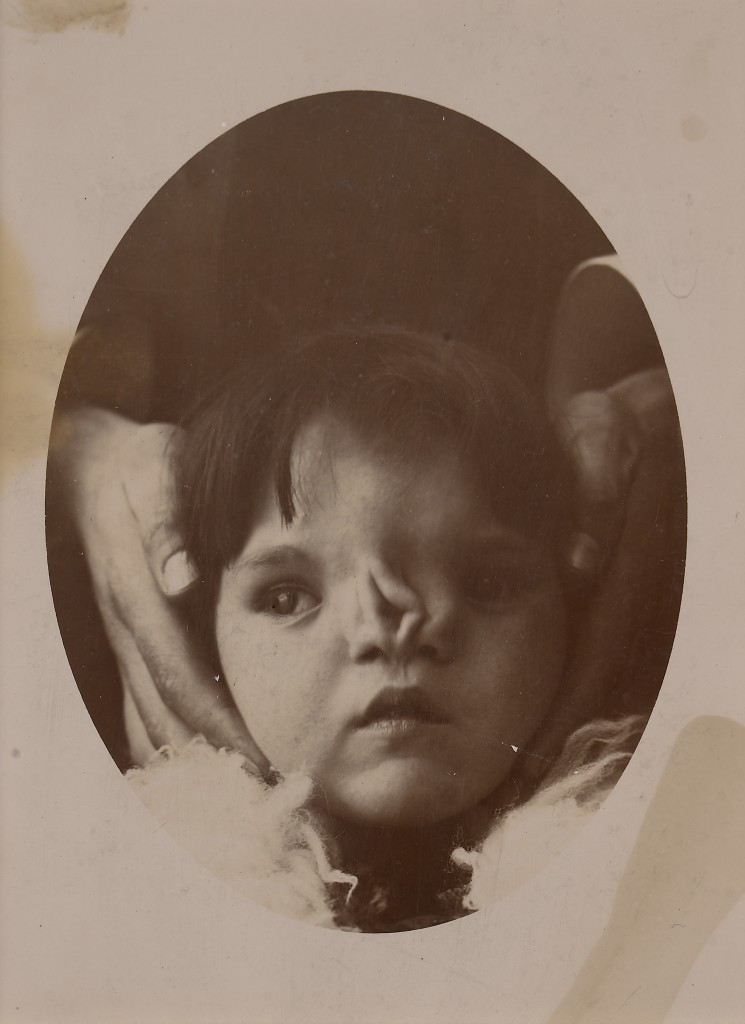
“Congenital Deformity Of The Nose” by Wellcome Images is licensed under CC BY 4.0
The above 1899 photograph is of a six-year-old girl. She had a congenital deformity of the nose. It is clearly a peculiar malformation. Although the nose looks highly challenging to repair, with the advanced techniques we have today, a rhinoplasty surgery can potentially correct the deformity.
For interesting information on protruding ears, please visit our article called Big Ears.
Tessa Evans: A Child Who Was Born Without A Nose
Tessa Evans is a child from from Maghera, Ireland. She was born with an incredibly rare structural birth defect called arhinia. Her condition is so severe, she was born with the complete absence of her nose. Classified as a craniofacial abnormality, the condition involves the partial or complete absence of the nose at birth. In the history of modern medicine, there have only been 47 reported cases. Currently there is no known cause of arhinia.
Challenges For Tessa
Despite Evans not having a sense of smell as well as no sinuses, she can still cough, sneeze and even catch a cold. In order to help create the look of actual nose, her parents turned to medical professionals. She has now become the first person to ever have a cosmetic nasal implant. The procedure was performed early in life with hopes of creating a realistic-looking nose by the time Evans reached her teenage years.
The Method For Creating A Nose
- Surgeons used a 3D printer to make a model of Tessa’s skull.
- A substance was used to make a small mold that could fit to her face underneath her skin.
- Before the operation took place, the mold was produced in medical grade material.
- To prevent scarring of the face, an incision was made behind Tessa’s hairline. Then the mold was inserted via the incision.
For the next couple of years, Tessa will need more surgical operations and new implants in order to expand the tissue. By the time she reaches her teenage years, surgeons will create a more definitive nose, which will involve tattooing in nostrils and creases.
Multiple Deformities: A Child Born From Parents That Were First Cousins
This baby had a very rare disorder called Roberts syndrome. It is caused by the mutation of the ESCO2 gene located on human chromosome 8. It affects both males and females. About half of the individuals will suffer with mild to severe retardation. The disorder is characterized by a disruption of cell division, which eventually leads to malformations of the limbs and the face. Unfortunately, the mortality rate for this extremely rare condition is very high with severely affected patients.
The child in the image has a double cleft lip and palate, protrusion of the intermaxillary portion of the upper jaw and extremely poor development of the bones of all four limbs. Born to the parents of first cousins, the child had belonged to a family where intermarrying would often took place.
For more information on babies with malformations, visit our article called 6 Deformed Babies.
Sirenomelia: The Mermaid Syndrome
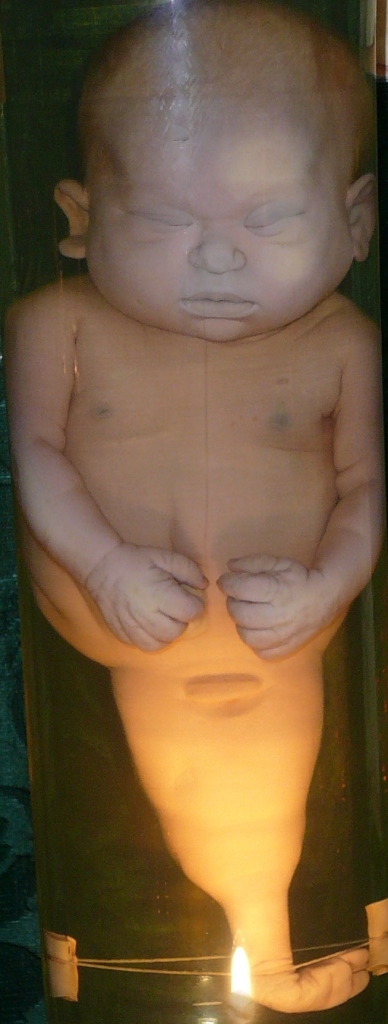
“Sirenomelia” by Stanislav Kozlovskiy is licensed under CC BY-SA 3.0
Sirenomelia (also known as Mermaid Syndrome) is rare congenital deformity. It is a very rare medical condition and is also exceedingly peculiar. The exact cause is still unknown. The majority of the cases occur randomly for no obvious reasons. Because the legs are fused together, it gives an appearance of a mermaid’s tail. We mentioned this extremely rare deformity in a previous post on human abnormalities. The above image shows a close-up view of a child who had Sirenomelia.
Sirenomelia is so rare that has only seen in approximately one out of every 100,000 live births. For identical twins, the condition is 100 times more likely to occur than singleton or fraternal twins. Unfortunately, due to the severe complications associated with abnormal kidney and urinary bladder development, the child will die within just one or two days of their birth. Over half of the cases of sirenomelia will result in stillbirths. However, amazingly there were three patients that had survived with sirenomelia past their birth. Their incredible survival was due to the fact that they did not have the usual kidney and bladder complications generally caused by the deformity.
Kyphoscoliosis

This is a 1899 photograph of a patient who suffered from a condition called Kyphoscoliosis.
Kyphoscoliosis is a musculoskeletal disorder, which causes abnormal curvature in the frontal and sagittal plane. The deformity is actually a combination of both kyphosis (exaggerated outward curvature occurring in the thoracic, cervical and sacral regions) and scoliosis (sideways curvature of the spine usually in the shape of an S or a C).
In addition to psychological issues and difficulties with performing day-to-day activities from living with Kyphoscoliosis, the disorder can also lead to pulmonary hypertension and under-ventilation of lungs.
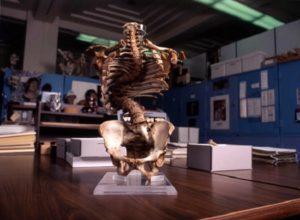
“Skeletal specimen “ by Otis Historical Archives Nat’l Museum of Health & Medicine is licensed under CC BY 2.0
This is an image of a female skeletal specimen (1890-1860) at the National Museum of Health and Medicine. Clearly you can see the curvature of her spine as she lived with Kyphoscoliosis.
What Causes Kyphoscoliosis?
Here is a list of several common causes of Kyphoscoliosis:
- Congenital abnormalities including Spina bifida
- Regularly having abnormal posture, or slouching for a prolonged period
- Infections such as vertebral tuberculosis or general tuberculosis
- Patients who suffer from Osteoarthritis (OA) or osteoporosis (more common in people over the age of 50)
- Genetic factors
This is an image showing a 22-year-old man with a disease called Scheuermann’s disease. The skeletal disorder is a type of structural kyphosis.
Mohammad Kaleem: The Boy With the World’s Biggest Hands
Mohammad Kaleem is a young boy from eastern India. Due to a rare medical condition, his hands grew to a length of 13 inches (from wrist to fingertips). In addition to difficulties performing daily activities, Kaleem has also dealt with local villagers calling him names like “devil child.” Some believed the large hands were a curse from god. The size of his hands also prevented him from attending school. Teachers believed that if he attended school, he would not only be bullied by other children, but would also likely terrify them with his hands.
What Is Kaleem’s Medical Condition?
Kaleem has a condition called Local gigantism (also called localised gigantism). The size of a certain part of the body becomes larger than normal size. It may be caused by a heterogeneous group of hereditary and acquired conditions.
When one acquires this condition in their fingers and toes, it is termed macrodactyly.
The Plan To Help Reduce The Size Of Kaleem’s Hands
With very little income, his parents could not afford surgery to help shrink the size of his hands. They were unaware that there was a possible remedy for their son. That was until they met hand surgeon Dr Raja Sabapathy. They were given hope that this surgeon could help change his life forever. The challenge was reducing his hands and fingers (including part of his forearm) without damaging any nerves along the way. Doctors suggested that the best way to go was to start with surgery on just one hand.
Kaleem’s surgery lasted 8 hours. With a series of surgeries performed so far, he will need more in order to reduce the growth plates, which would prevent his hands and fingers from any further growth. Kaleem will also need continuous physical therapy to help him gain the ability to use his new hand. His family is considering further surgery on his left hand.
Fortunately for Kaleem, his school is aware he is being treated. They are now open to the idea of allowing him back in. They are also instructing their students to not bully him when he comes back.
Statistics On 21 Major Birth Defects In The United States (from 2004-2006)
Here is a interesting chart with statistics on human abnormalities in the United States. There are 21 major birth defects from 2004-2006. The results were conducted by Centers for Disease Control (CDC).
The abnormality with the largest number of estimated annual number of cases was down syndrome at 6,037 cases a year. One of the rarest birth defects was anencephaly at just 859 cases per year. Interestingly, according to recent information from the CDC website (last updated on August 2, 2017), the number has gone up quite a bit since 2006. In the United States, the average is now 1,206 cases of babies born with anencephaly each year.
Shocking Videos Of More Humans Suffering From Rare Abnormalities
Xia Yuanhai: A Man With Alien-Like Features
For more information on bizarre human diseases, visit our post Strange Diseases In Humans.
Deformation For The Purpose Of Fashion
Neck Rings For Beauty
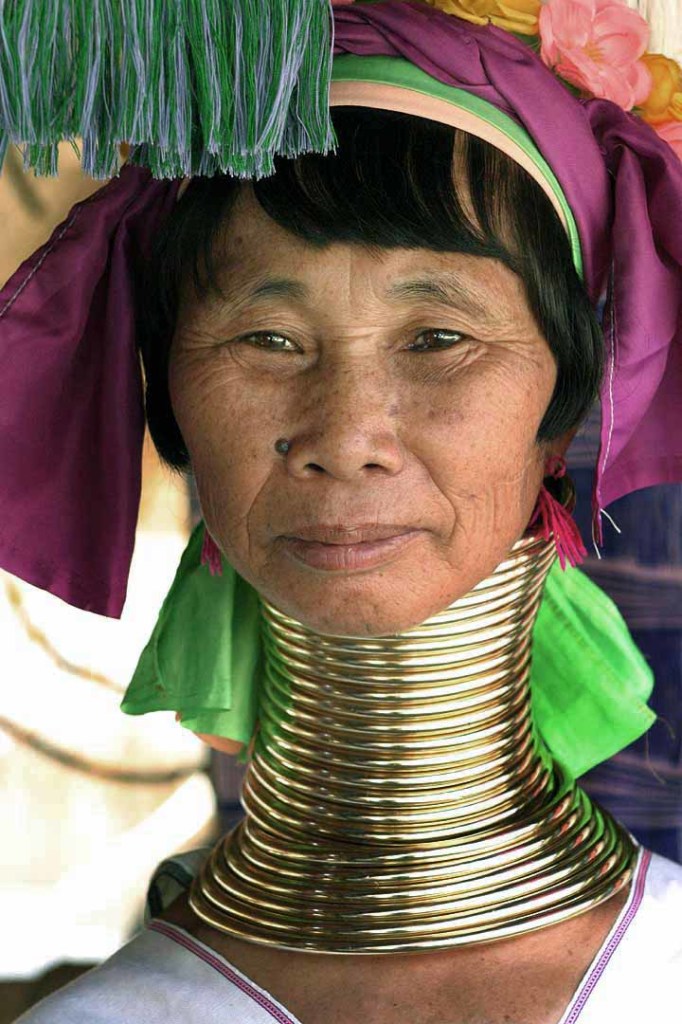
“Kayan Woman With Neck Rings” by Steve Evans is licensed under CC BY 2.0
Neck rings are a form of stiff jewellery. In many cultures, they are often used as an ornament and are worn by both females and males. Elongated necks are often looked at as a form of beauty.
Why Do Neck Rings Make A Neck Look Long?
Although it appears that one can get an elongated neck from neck rings, this is untrue. The neck rings will push the collarbone and ribs down and due to the weight of the rings, the collarbone is forced to twist. Also, the upper ribs will eventually be at an angle that is 45 degrees lower than normal. This is what will create the illusion that the neck is elongated. Although the vertebrae do not elongate, as the intervertebral discs absorb liquid, the space between them may increase.
Stretched Labret Piercings
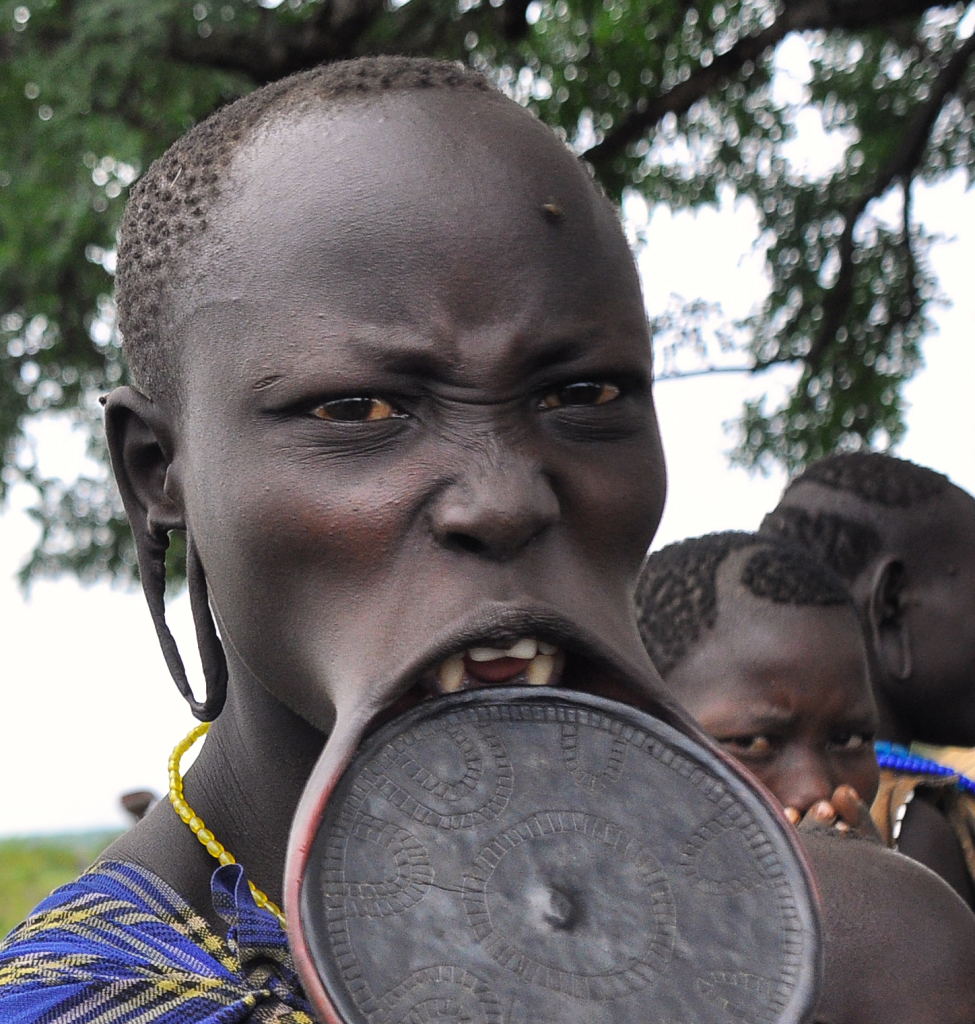
“Mursi Tribe, Ethiopia” by Rod Waddington is licensed under CC BY-SA 2.0
A labret piercing (often referred to as a lip piercing) is when a small object (such as a designed barbell or stone) is inserted directly into a perforation that is usually located in the middle of the lower lip. In some cultures, it is considered an ornament. As you can see from the image above, the Ethiopian woman has a large labret piercing. Does she look extremely uncomfortable to you?
Stretched Nostril Piercings
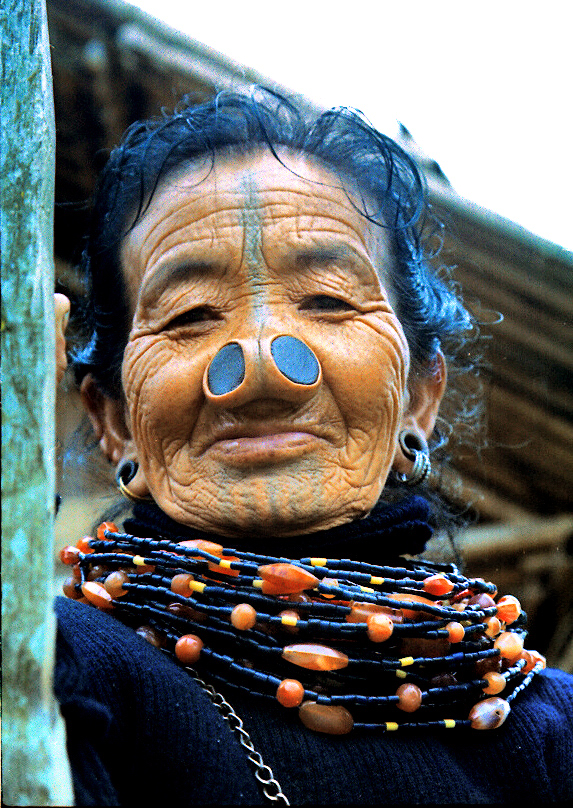
“Apatani Lady” by Sumantbarooah is licensed under CC BY-SA 3.0
This is an image of an Apatani woman from India. It is apparent that she stretched out her nostrils with piercings. It is not uncommon to see people from various tribes with stretched piercings and lots of jewelery. Even in the United States, stretched piercings are becoming a very popular trend.
Stretching The Ears And Its Consequences
If you are going to make any cosmetic change to your body, it is crucial that you know it is what you will want to have even decades later. If you are not careful, you may later face consequences.
Doctors have warned young people that if they choose to stretch their ears past approximately a half an inch, the ears are unable to shrink back to normal on their own. If you happen to stretch your ear too far and you no longer like it, your only option to correct it would be an operation.
Implants And Pointy Elf Ears
The above image shows a woman who deliberately made a few transformations to her facial features. She had a surgical procedure (known as ear pointing surgery) so she can have elf ears.
The ear shaping surgery is said to be extremely painful and once it is all completed, there is no turning back. Although it is irreversible, there are many people that prefer the elf-like look. The woman above also has a couple of subdermal implants that are located at the top of her forehead.
Scarification
This is a 1911 photograph of a woman from the Larrakia tribe (indigenous Australians). Her back clearly shows she once went through the process known as scarification.
Scarification (sometimes called cicatrization) is an ancient practice, and a form of permanent body modification. The process involves cutting, burning, or branding words or images into the skin. Due to the high risk of infection, scarification is considered an unsafe practice.
Despite being an ancient practice, this extreme body art is still practiced by many around the world today. Here are some images of modern humans who have undergone scarification.
Final Words
You probably know or have at least met one person who suffers with a severe deformity. You may see how differently they are treated from others in their daily lives. Hopefully, you treat them just like anyone else. They didn’t ask to have their deformities. People who do not possess any kind of abnormal condition are no better than any of the 10 deformed people we mentioned in this post.
Some people deliberately create their own human deformities. They will often take big steps to create their desired look. They will even make a complete transformation with the help of surgical procedures. Of course, some will find their transformations to be too extreme and controversial. However, it makes them feel complete and also gives them opportunities to work at freak shows. If you know of anyone with malformations (even for fashion purposes), please share in comments.
